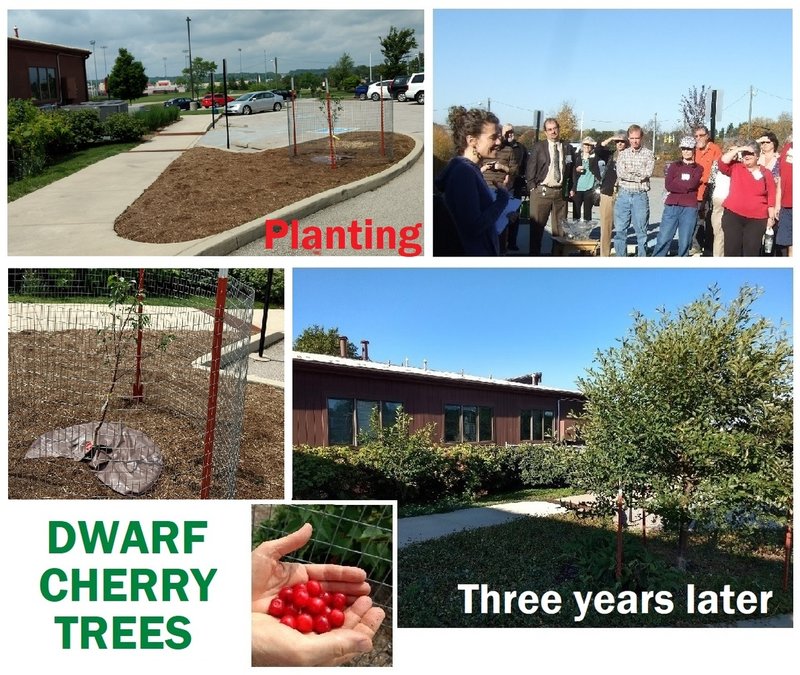Energy Star
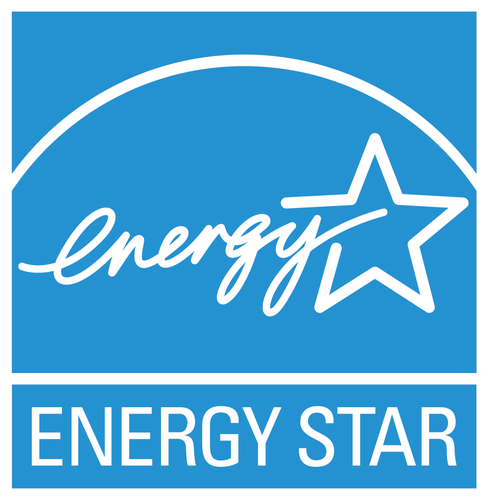
Our building has been Energy Star® certified since 2015. In 2021 our score was 98, putting the church in the top two percent of buildings of worship nationally.
Members of the Unitarian Universalist Church of Bloomington believe that fighting to slow –and preparing to deal with– global warming is our greatest generational challenge, and that our congregation should lead by example. In 2005 members organized the Green Sanctuary Task Force on Global Climate Change (GSTF). See current and past GSTF projects on the Green Sanctuary page of the church website.
Our congregation is seen as a leader by area congregations, and Earth Care, an interfaith organization, was co-founded and has often been led by members of this church. We track our energy and water use through Energy Stewards, which then uploads data to EPA Energy Portfolio Manager. At the end of each calendar year, we apply for certification through the Portfolio Manager website. That website provides graphs to help visualize our energy use.
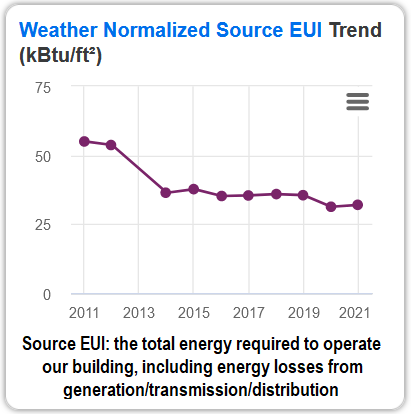
This graph “normalizes” our energy use based on the area’s weather and includes the “source” energy lost in generation and transmission of energy that we purchase.
Reducing our impact on our earth
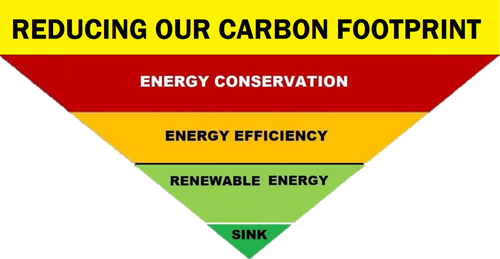
We focused on four areas to reduce our impact on our Earth:
- Energy Conservation:
- Improvements to our building.
- “Get in a Zone!”
- Energy Efficiency.
- Renewable Energy.
- Creating a Carbon Sink.
Energy Conservation
Our Building
As the congregation grew over the years what began as a two story 3000 sq. ft. building in 1970 expanded multiple times to over 17,600 sq. ft.
As a result of these additions, we have nine different thermostats in nine heat/cooling (HVAC) zones, allowing us to only heat or cool those being occupied at any given time.
Our Challenges
- In 2012 we accepted a challenge to reduce the building’s energy consumption by 25% from a baseline of 2008.
- In 2017 we took the Interfaith Power and Light Paris Pledge to commit to reducing our carbon pollution by 50% by 2030 and to be carbon neutral by 2050.
Conservation Methods
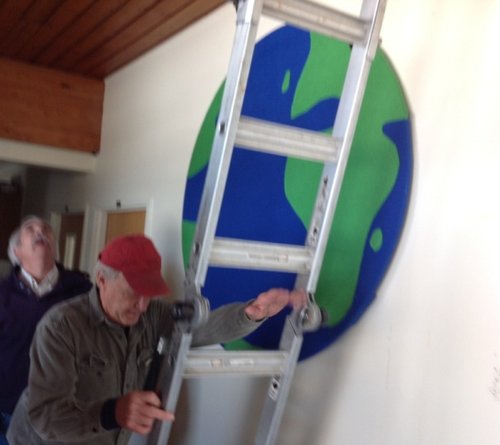
- No-cost conservation:
- We programmed our thermostats to 55°F in the winter and 84°F in the summer when spaces are empty.
- We close doors between heating/cooling zones to keep conditioned air only where it is needed.
- Low-cost conservation:
- Members cut openings to improve air flow, insulated the attic hatches, replaced weather stripping on old doors, and caulked around recessed ceiling lights.
Energy Efficiency
Heating and Air Conditioning
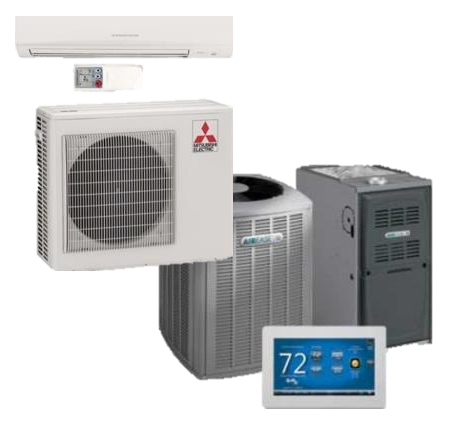
- We are upgrading HVAC systems as needed, and converting to efficient electric heat pumps
Lighting
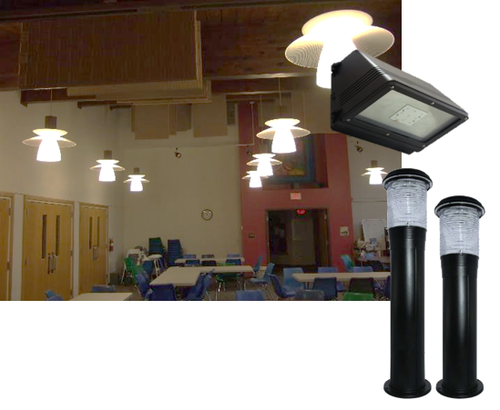
- We have converted all incandescent lights to LED or fluorescent lamps.
- Motion sensors were installed on restroom lights and fans.
- Timers are being added to water heaters.
- We are replacing old appliances with efficient Energy Star models.
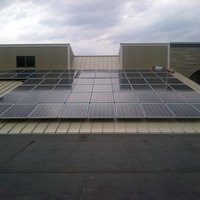 Renewable Energy
Renewable Energy
Our 42.2 Kw of solar panels, in arrays on our three south-facing roofs, cover or offset over 90% of our electricity usage.
- In May 2013, after we received a matching grant* from the Indiana Office of Energy Development (OED), we installed our first two solar panel arrays.
- The OED grant required that we reduce our energy use by 25% from a baseline year. Including the renewable energy, we have reduced our energy use by over 50% since 2010.
- See our energy star page to learn how we achieved these reductions. Our 2021 Energy Star Certification score is 98 for buildings of worship.
- In 2017, we raised funds from our members to add a third array, bringing our panel total to 42.2 kilowatts.
- In 2021, the combined arrays produced or offset over 82% of our building’s electricity, saving over $41,000.00 on electric bills since 2013.
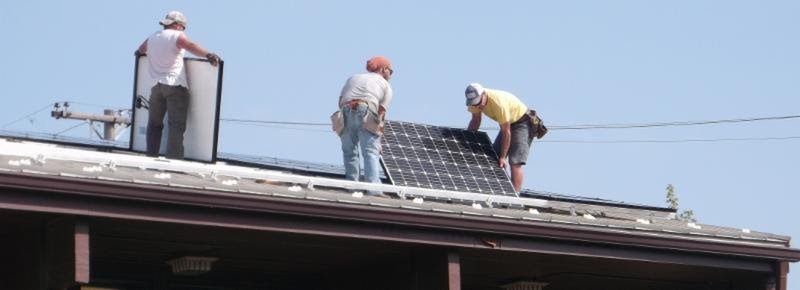
The graph below shows our energy production versus what we purchase from the grid over time.
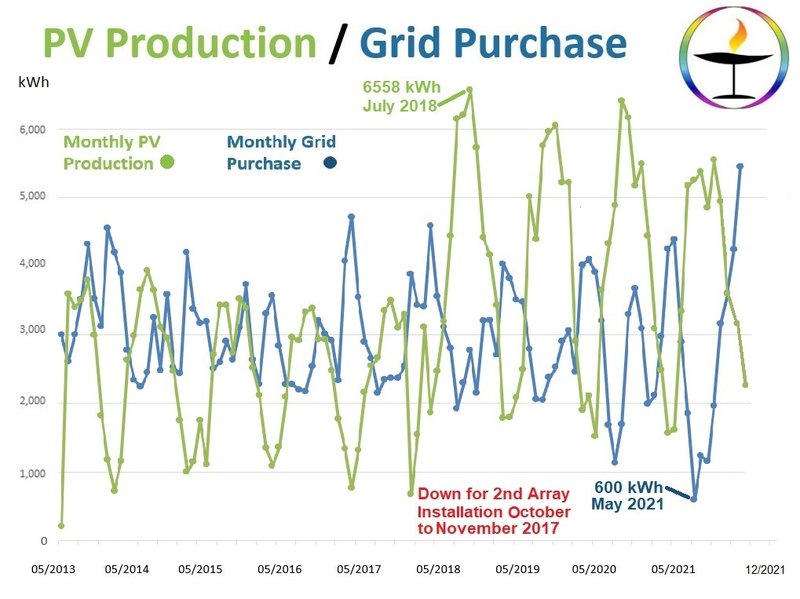
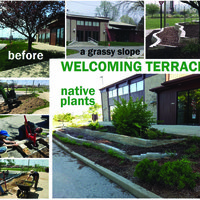 Permaculture Project
Permaculture Project
On our church grounds, we have applied permaculture principles by reducing the amount of lawn we have to maintain and replacing some of it with native and drought-resistant plantings including bushes and trees that provide fruit or nuts for people and animals, flowers that attract pollinating insects, and milkweed for monarch caterpillars. These improvements have created wind barriers and/or shade, reduced sheet erosion on slopes, and enhanced the soil fertility.
This has also created a carbon sink, reducing our carbon footprint.
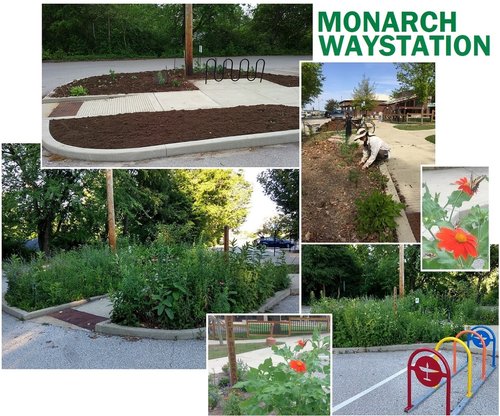
The term “permaculture” is derived from the words “permanent agriculture.” Permaculture refers to a design system that incorporates natural principles and calls on us to live in harmony with the earth. The three ethics of permaculture are:
- Earth Care
- People Care
- Fair Share
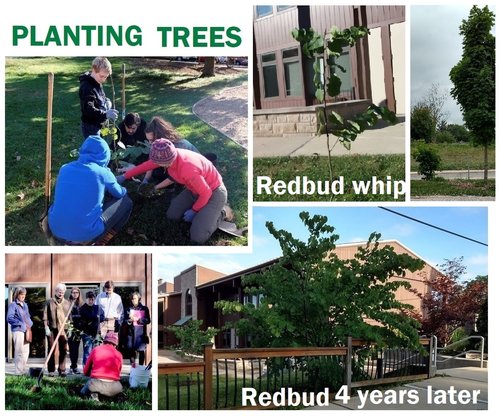
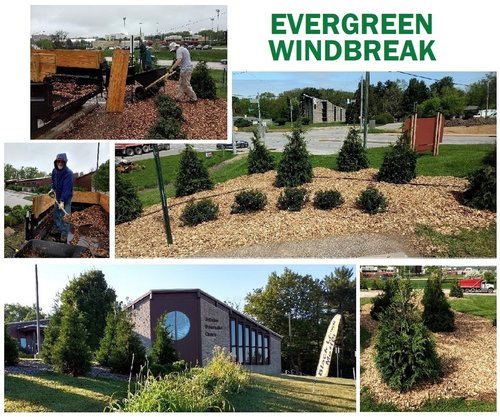
Permaculture is based on 12 principles, first articulated by Robert Holmgren.
Many of these principles align with Unitarian Universalist values.
- Observe and Interact
- Catch and Store Energy
- Obtain a Yield
- Apply Self-Regulation and Accept Feedback
- Use and Value Renewable Resources and Services
- Produce No Waste
- Design from Patterns to Details
- Integrate Rather Than Segregate
- Use Small and Slow Solutions
- Use and Value Diversity
- Use Edges and Value the Marginal
- Creatively Use and Respond to Change
